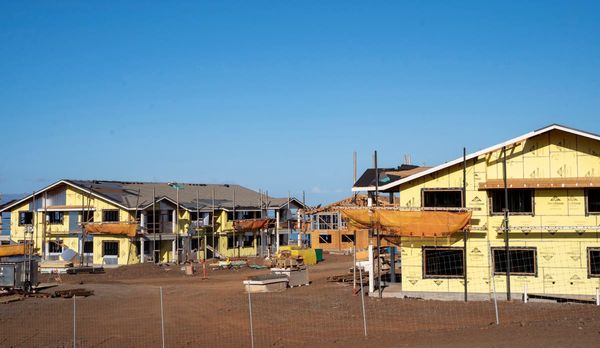
The Bureau of Meteorology has declared that Australia is now in an El Niño climate pattern that will increase the chances of a hot and dry summer, and heighten the risk of dangerous bushfires.
Dr Karl Braganza, the BoM’s manager of climate services, confirmed the event was underway at a press conference on Tuesday afternoon, and said it was associated with “an increase in fire danger and extreme heat risk”.
The announcement comes amid soaring temperatures and extreme fire danger across parts of south-east Australia. Total fire bans were declared for the New South Wales south coast and greater Sydney region on Tuesday, while bushfire evacuation orders were issued in parts of Queensland during the week.
There was not yet a clear indication of how strong the El Niño would be, Braganza said. However, “the strength of an El Niño … doesn’t necessarily correspond to the severity of the rainfall deficiencies over Australia,” he said. “We have had weak events that have caused quite significant drought; we’ve had strong events that haven’t caused such severe conditions in the past.”
“In all likelihood, we can expect that this summer will be hotter than average and certainly hotter than the last three years.”
Braganza said modelling suggested the El Niño would persist until the end of summer.
The UN’s weather agency, the World Meteorological Organization (WMO), declared the onset of an El Niño in July, after the US National Oceanic and Atmospheric Administration (NOAA) did so in June.
The BoM has had Australia on an El Niño alert since June, saying there was a 70% chance of the system locking in place by the summer.
But until Tuesday, Australia’s weather agency had stopped short of making the declaration, pointing to a lack of tell-tale signs in the atmosphere.
El Niños are characterised by warmer than average sea surface temperatures in a central region of the equatorial Pacific. Those temperatures have been enough to see WMO and NOAA declare the climate pattern in place.
But the BoM had said the atmosphere was not reacting to the hotter temperatures. In an El Niño, the trade winds that blow from east to west over the Pacific weaken or even reverse.
“We have been waiting for the atmosphere to … couple with the oceans. The oceans have been in El Niño pattern for a couple of months. In the last two weeks, we have seen the atmosphere over the tropical Pacific respond to that pattern,” Braganza said. “That’s the sort of thing that sustains an El Niño event out until autumn.”
For the BoM to declare an El Niño, three of four criteria must be met. Until now, only two thresholds had been met. Braganza confirmed on Tuesday that a third, the southern oscillation index, met the required threshold.
Climate and bushfire experts have said that the drier and hotter conditions associated with El Niño will raise the risk of dangerous bushfires.
El Niño tends to result in hotter than average temperatures across most of southern Australia. For eastern Australia, nine of the 10 driest winter-spring periods on record have occurred during El Niño years.
The BoM has also confirmed that a positive Indian Ocean dipole (IOD) event is underway. The IOD is determined by differences in sea surface temperature between the eastern and western Indian Ocean.
A positive IOD usually results in decreased spring rainfall for central and south-east Australia. The climate phenomenon usually begins in late autumn or winter.
According to the Bureau, the risk of a significant fire danger season in south-east Australia is significantly higher after an El Niño year, particularly when combined with a positive IOD.
The previous three Australian summers have seen a triple La Niña – the cooler and wetter phase of the El Niño-Southern Oscillation.
Those conditions have encouraged large amounts of grass and vegetation to grow that could become fuel for fires.
The Australasian Fire Authorities Council has issued an outlook for spring showing increased risk of bushfires over large parts of Queensland and NSW and parts of Victoria and the Northern Territory.







